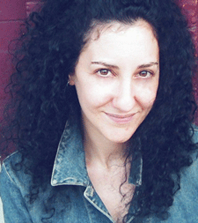This year I planted flowers and vegetables in my plot at my community garden. I decided to go public with my fledgling efforts at vegetable raising. From the look of the dozens of other plots around me, it appears my skills are not the worst of the bunch.
But I’m still new to this gig, and didn’t realize the amount of work involved—digging up the plot, preparing the soil, building a bed, framing it out, sowing seeds, transplanting seedlings, watering, tending … and, of course, weeding.
Oh my god, the weeding.
I had to face it during this last, long Fourth-of-July weekend, or my precious plants would be threatened by weed Armageddon. I promised myself I’d do it, despite the 96-degree weather. So I put my head down and marched in the direction of the work that lay before me.
The previous week, I had spoken with my unofficial gardening mentor—my mother’s friend, someone I knew from my childhood. She has successfully gardened every year for over twenty years. She confirmed what I had suspected—my kale and mustard just weren’t going to make it. Time to pull them up and plant something new. She suggested pumpkins; they would be ready in time for the fall harvest.
While I like pumpkins, and was excited at the opportunity to plant a new species in my garden, I wasn’t thrilled about killing off my lovely hopefuls. I really wanted to stir-fry some kale, make salads and kale chips, surprise my mother with a bunch of home-grown mustard greens—her favorite. But I had planted too late, or too early, depending on how you look at it, and those plants simply never made it. On top of that, they were getting eaten by some critter or other, and I just knew … it was time.
But I weeded rather than uprooting the ailing plants, wishfully thinking there might still be a way I could rescue them. I feared that the empty corner they had once occupied would sit there, absent, abandoned, reflecting failure on the rest of my harvest.
I was hanging on out of fear.
The weeding was hard work. My shoulders ached, sweat dripped down the backs of my legs, and my neck felt itchy. I bargained with myself, thinking that maybe I’d come back another time to finish the work—but as the sun began to set, the cicadas hummed, and evening birds were chirping, I found myself finally really enjoying my nine-by-ten-foot plot of tranquility.
I started to gain momentum with the weed-pulling. I was seeing progress. The weeds were no longer choking my precious plants. My plants began to look glorious in their cleaned-up and unfettered state. There was a payoff to this weeding, this removing of obstacles, uncovering the fruits of my labor.
I was surprised and delighted.
I was reminded of the areas of my life where I had also recently weeded—cleaning up my desk area, my spending, the images on my vision board, my diet—so that what remained was the life-giving stuff that resonated and promised return on my investment. By weeding, by removing what didn’t belong or threatened to choke, I aligned myself with what I was wanting—an organized work area, a debt-free life, a clear vision, and vibrant health.
I’m clearing the way and making room so that the things that remain can grow stronger. So that their beauty is unveiled.
Which is not unlike writing. And editing. And rewriting.
I was so attached to my kale and mustard greens that I doubted the strength of my other plants. If I removed the dying plants, I was afraid my garden would look bare. I did not realize that that it would end up looking so much healthier and more robust.
When I edit, I am taking away what is no longer beautiful. What no longer serves the whole. It is a process of removing, of creating space for what is already working, and making room for what needs to happen next …
I think my jack-o-lantern seeds will like it where the kale and mustard greens once grew. If I really wanted, I could always try them again the next year.
Maybe.
Right now I’m letting the garden take shape by simply allowing what is beautiful to remain.

